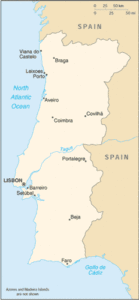 The history of the Jews in Portugal reaches back over two thousand years. With the fall of the Roman Empire, Jews were persecuted by the Visigoths and other European Christian kingdoms which controlled the area after that period.
The history of the Jews in Portugal reaches back over two thousand years. With the fall of the Roman Empire, Jews were persecuted by the Visigoths and other European Christian kingdoms which controlled the area after that period.
In 711, the Moorish invasion of the Iberian Peninsula was seen by many in the Jewish population as a liberation, and marked as the beginning of what many have seen as the Golden age of Jewish culture in the Iberian Peninsula (the Islamic Al-Andalus), even if the Jews, as well as the Christians (the Mozarabs of the Visigothic rite), under Muslim rule were considered Dhimmi, and had to pay a special tax. The importance of the Jewish community in the economy of Portugal can be inferred from the punishment against those who robbed merchant men, robbing either Muslim, Christian, and Jew was of equal severity.
Until the 15th century, some Jews occupied prominent places in Portuguese political and economic life. After the conquest of Granada, the Spanish crown had ordered the expulsion of the Jewish population, many Spanish Jews fled to Portugal. The Portuguese were reluctant to admit the Jews into Portugal, but John II proposed to collect a tax of eight cruzados per person. Six hundred wealthy families were offered a special contract to remain in Portugal and were settled in the larger cities. In 1493, King John deported several hundred Jewish children to the newly discovered colony of São Tomé, where many of them perished.
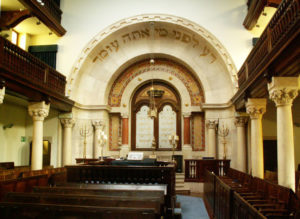 Following John’s death in 1494, the new king Manuel I of Portugal restored the freedom of the Jews. However, in 1497, under the pressure of the Spain through the marriage of Isabella, Princess of Asturias, the Church, and some Christians among the Portuguese people, King Manuel I of Portugal decreed that all Jews had to convert to Christianity or leave the country without their children. Hard times followed for the Portuguese Jews, with the massacre of 2000 individuals in Lisbon in 1506, further forced deportations to São Tomé (where there is still a Jewish presence today), and the later and even more relevant establishment of the Portuguese Inquisition in 1536.
Following John’s death in 1494, the new king Manuel I of Portugal restored the freedom of the Jews. However, in 1497, under the pressure of the Spain through the marriage of Isabella, Princess of Asturias, the Church, and some Christians among the Portuguese people, King Manuel I of Portugal decreed that all Jews had to convert to Christianity or leave the country without their children. Hard times followed for the Portuguese Jews, with the massacre of 2000 individuals in Lisbon in 1506, further forced deportations to São Tomé (where there is still a Jewish presence today), and the later and even more relevant establishment of the Portuguese Inquisition in 1536.
The Inquisition held its first Auto da fé in Portugal in 1540. Like the Spanish Inquisition, it concentrated its efforts on rooting out converts from other faiths (overwhelmingly Judaism) who did not adhere to the strictures of Catholic orthodoxy. They mostly targeted the Jewish New Christians, conversos, or marranos. The Portuguese Inquisition expanded to the entire Portuguese Empire, including Brazil, Cape Verde, and India. Between 1540-1794 tribunals in Lisbon, Porto, Coimbra and Évora burned 1,175 persons, another 633 were burned in effigy and 29,590 were penanced. The Portuguese inquisition was extinguished in 1821.
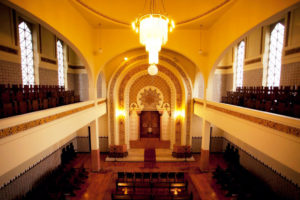 Thousands of Portuguese Jews, the vast majority, would eventually emigrate to Amsterdam, Thessaloniki, Constantinople (Istanbul), France, Morocco, Brazil, Curaçao and the Antilles. The Crypto-Jews, known as New Christians, were under the constant surveillance of the Inquisition, so many emigrated so they could practise the Jewish faith, joining the communities of Spanish and Portuguese Jews in places like Amsterdam, London or Livorno.
Thousands of Portuguese Jews, the vast majority, would eventually emigrate to Amsterdam, Thessaloniki, Constantinople (Istanbul), France, Morocco, Brazil, Curaçao and the Antilles. The Crypto-Jews, known as New Christians, were under the constant surveillance of the Inquisition, so many emigrated so they could practise the Jewish faith, joining the communities of Spanish and Portuguese Jews in places like Amsterdam, London or Livorno.
Very few Jews, the Belmonte Jews, practiced their faith secretly in a strict secret isolated community. Known as the Marranos, some dozens have survived until today by the practice of inmarriage and few cultural contact with the outside world. Only recently, have they re-established contact with the international Jewish community and openly practice religion in a public synagogue with a formal rabbi.
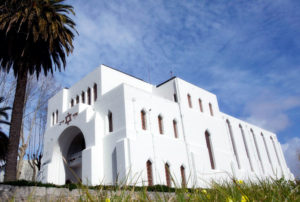 In the 19th century, with the end of the inquisition, some affluent families of Sephardi Jewish Portuguese origin, namely from Morocco and Gibraltar, returned to Portugal. After the Inquisition ended in the early 19th century a small number of Sephardic Jews began to return to Portugal. They established the first post-Inquisition synagogue, Ponta Delgada’s Har Hashamaim Synagogue, in 1836. The Lisbon Synagogue, was inaugurated in 1904. The Jewish Community of Lisbon was officially recognized in 1913. The Jewish Community of Porto was officially recognized in 1923.
In the 19th century, with the end of the inquisition, some affluent families of Sephardi Jewish Portuguese origin, namely from Morocco and Gibraltar, returned to Portugal. After the Inquisition ended in the early 19th century a small number of Sephardic Jews began to return to Portugal. They established the first post-Inquisition synagogue, Ponta Delgada’s Har Hashamaim Synagogue, in 1836. The Lisbon Synagogue, was inaugurated in 1904. The Jewish Community of Lisbon was officially recognized in 1913. The Jewish Community of Porto was officially recognized in 1923.
From 1929 Portugal was under the nationalist regime of António de Oliveira Salazar, but Portuguese nationalism was not grounded on race or biology. In 1934 Salazar made it clear that Portuguese nationalism did not include pagan anti-human ideals that glorified a race. In 1938, he sent a telegram to the Portuguese Embassy in Berlin ordering that it should be made clear to the German Reich that Portuguese law did not allow any distinction based on race and therefore Portuguese Jewish citizens could not be discriminated against. Early in September 1939, Portugal proclaimed its neutrality, nonetheless, its sympathies were clearly on the side of the allies.
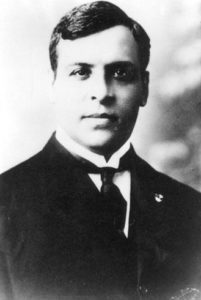 At the outbreak of World War II, there were nearly 400 Jews living in Portugal plus an additional 650 Jewish refugees from Central Europe. Under threat of military action from the Nazis Salazar issued orders on November 11, 1939, that consuls were not to issue Portuguese visas to “foreigners of indefinite or contested nationality; the stateless; or Jews expelled from their countries of origin”. Despite Salazar’s strict policy, efforts to provide entry visas into Portugal to Jews via rescue operations continued. The number of refugees that has escaped through Portugal during the war has estimates that range from one hundred thousand to one million, an impressive number considering the size of the country’s population at that time.
At the outbreak of World War II, there were nearly 400 Jews living in Portugal plus an additional 650 Jewish refugees from Central Europe. Under threat of military action from the Nazis Salazar issued orders on November 11, 1939, that consuls were not to issue Portuguese visas to “foreigners of indefinite or contested nationality; the stateless; or Jews expelled from their countries of origin”. Despite Salazar’s strict policy, efforts to provide entry visas into Portugal to Jews via rescue operations continued. The number of refugees that has escaped through Portugal during the war has estimates that range from one hundred thousand to one million, an impressive number considering the size of the country’s population at that time.
Aristides Sousa Mendes, the Portuguese Consul in Bordeaux, acting alone and against government orders, issued over 30,000 visas to refugees fleeing Nazi-occupied Europe. Mendes, a practising Catholic, had Jewish antecedents. He was dismissed for disobedience and died impoverished.The Portuguese Ambassador in Budapest, Carlos Sampaio Garrido and the Chargé d’Affaires Carlos de Liz-Texeira Branquinho, under Salazar’s direct supervision, helped an estimated 1,000 Hungarian Jews in 1944. They rented houses and apartments in the outskirts of Budapest to shelter and protect refugees from deportation and murder.
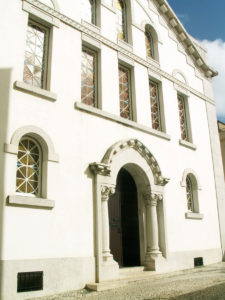 Ohel Jacob is the only Ashkenazi synagogue in the Iberian Peninsula and was originally established as an Orthodox congregation. The synagogue was inactive for a period but following its reconstitution in the 1990’s the Bnei-anussim, or children of Marranos, who were interested in returning to Judaism, were welcomed at the Ohel Jacob synagogue. Ohel Jacob was rededicated on December 17th, 2006, and was the first synagogue dedication in Portugal since the opening of the Belmonte synagogue in 1997. Jews from around the world attended the rededication ceremony for Portugal’s oldest standing synagogue on April 23, 2015. The Sahar Hassamain synagogue is located on Sao Miguel Island, 900 miles from the Portuguese capital of Lisbon, and was rededicated following a restoration project started in 2014. As there is only one Jewish resident on the island it will mostly be used as a museum.
Ohel Jacob is the only Ashkenazi synagogue in the Iberian Peninsula and was originally established as an Orthodox congregation. The synagogue was inactive for a period but following its reconstitution in the 1990’s the Bnei-anussim, or children of Marranos, who were interested in returning to Judaism, were welcomed at the Ohel Jacob synagogue. Ohel Jacob was rededicated on December 17th, 2006, and was the first synagogue dedication in Portugal since the opening of the Belmonte synagogue in 1997. Jews from around the world attended the rededication ceremony for Portugal’s oldest standing synagogue on April 23, 2015. The Sahar Hassamain synagogue is located on Sao Miguel Island, 900 miles from the Portuguese capital of Lisbon, and was rededicated following a restoration project started in 2014. As there is only one Jewish resident on the island it will mostly be used as a museum.
A law was passed by the Portuguese Government in 2013 and enacted in 2015 enabling Jews of Sephardic descent whose ancestors had been persecuted and exiled during the Spanish Inquisition and/or subsequent Portuguese Inquisition to acquire Portuguese citizenship.
Portugal’s Jewish community, numbers over 1,000, most of whom live in Lisbon. In the Jewish Community of Lisbon has Sephardi and Ashkenazi members share the same Synagogue, Shaaré Tikva, which has kept the original post Inquisition Sephardic Moroccan ritual. The Jewish Community of Oporto includes Jews of such diverse origins as Egypt, India, Russia, Canada, Belgium, United States, Poland, Spain, France, Israel, Brazil, Portugal, Mexico and Venezuela. The Kadoorie Mekor Haim Synagogue is the headquarters of the Oporto Community and it is the largest synagogue in the Iberian Peninsula.
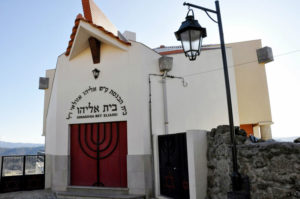 Belmonte is unique in that they maintained their Crypto-Judaism for 500 years. The women kept it alive, passing it on to their daughters and granddaughters. They traditionally lit candles in the cellar and observed important dates like Yom Kippur.
Belmonte is unique in that they maintained their Crypto-Judaism for 500 years. The women kept it alive, passing it on to their daughters and granddaughters. They traditionally lit candles in the cellar and observed important dates like Yom Kippur.
They have since ‘reconverted,’ have a beautiful synagogue and want to learn as much as they can. The Synagoga Bet Eliahu, erected in 1996, is in a picturesque location high up in the hills. In its pretty gardens, the grass is arranged to form a Magen David, and there’s a large menorah standing there too. They follow some Orthodox rules zealously, but not others.
https://www.youtube.com/watch?v=pbKTi6-vHlA/